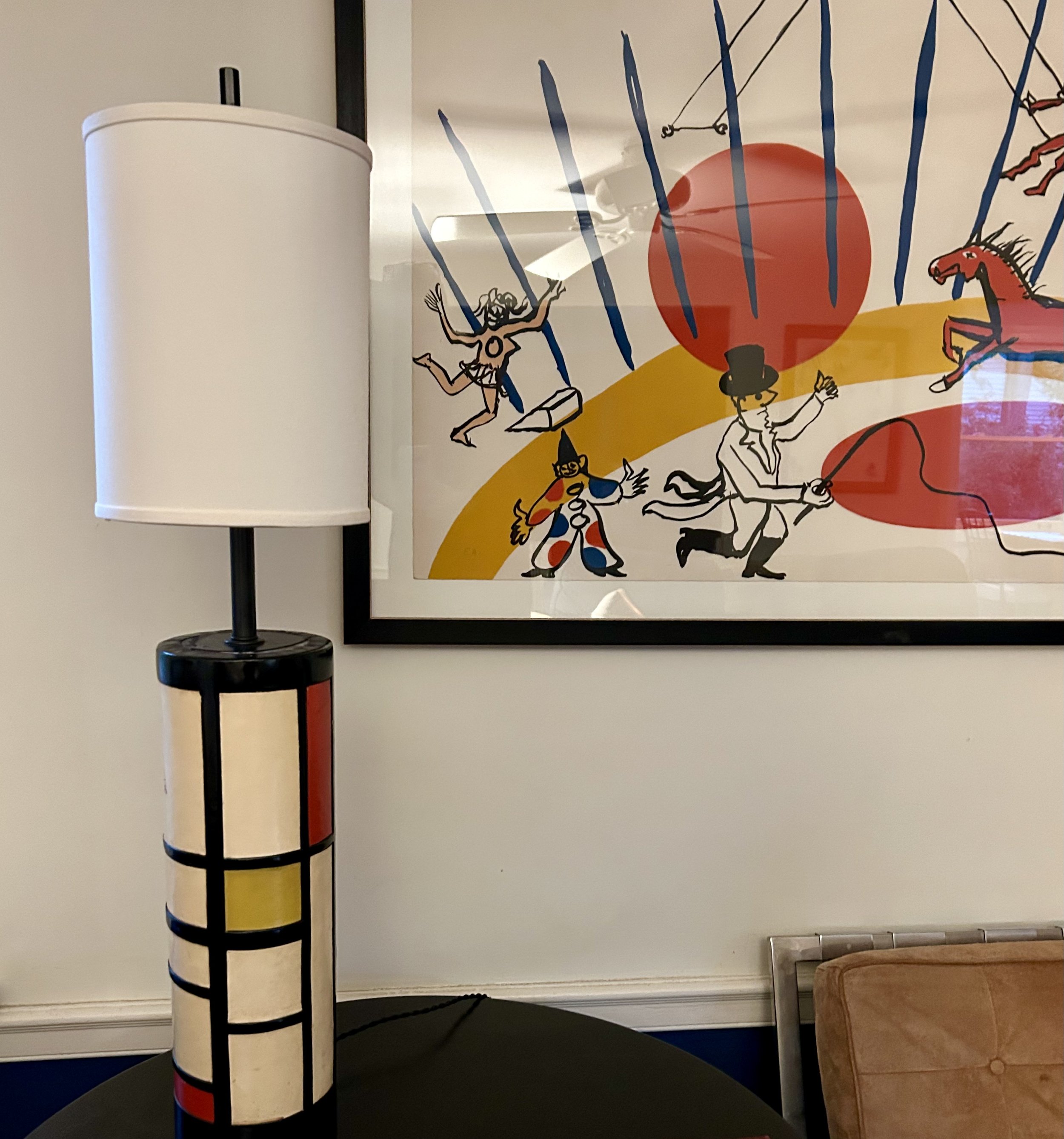My Love Affair With Calder
Someday I will need to do a “Parade of Lamps” as I seem to have developed a serious fetish of late. I blame some of this on a fabulous designer who has been downsizing in a town nearby, holding tent sales over this year. Trent has incredible – and expensive – taste and confessed to me he adores lamps and shoes. There is a table set up with “project lamps” at his sales – things he’s picked up but not gotten around to rewiring and using. These are all $20 and it is a bit like being a kid in a candy store. I have purchased other lamps at prior sales, and wrote a blog about one (see ericas-heirloom-treasures/wiring-not-included). This last weekend I purchased two lamps – neither of which I actually need mind you – because they were fabulous. And the one I truly coveted, but did not buy at first, was over $400.
While one of the lamps is also ceramic and amazing, this ceramic lamp is the one I want to discuss. It has not been rewired, nor does it have a shade at present. When I mentioned to Trent I coveted another expensive “Mondrian” style lamp he was selling, he told me that the white ceramic one is also a “Mondrian”, though done in pastel colors. He picked up both while living in Amsterdam back in the 1980s, and he understood they were “authorized” by Mondrian. How could I not bring this beauty home with me?! And pine for the pricier one.
Peit Mondrian was born in 1872 in the Netherlands. He studied art from a young age, and while his early works are impressionist in nature, his later works are the source of his fame. He wrote extensively about art theory, and created a number of art movements, including De Stijl (Style) and Neoplasticism. The purpose of De Stijl was to create visual harmony that could restore order and balance to everyday life after WWI, and was for all types items not just artwork. It is likely the lamp was a result of this movement, though as yet I do not have any verifiable evidence.
However, it was Neoplasticism that informed his work with primary colors and lines. The movement, started by him in 1917, was a philosophy where naturalistic representation in art was renunciatd in favor of stripped-down art composed of lines, rectangular planes and primary colors. ( https://www.moma.org/collection/terms/neo-plasticism) These are the works we all instantly recognize. Mondrian moved to New York City in 1942 and died in 1944.
One reason I have always loved Mondrian is his connection to Alexander Calder. Calder visited Mondrian in Amsterdam in 1930. Mondrian was a very “type A” artist, with a small section of his tidy apartment set up with an easel where he produced his work. Calder is the exact opposite – his studio was a cavernous space filled to the brim with bits and bobs. Calder noted after his visit that Mondrian’s studio “was a very exciting room…there were experimental stunts with coloured rectangles of cardboard tacked on…I suggested to Mondrian that perhaps it would be fun to make these rectangles oscillate. And he, with a very serious countenance, said ‘No, it is not necessary, my painting is already very fast…’ This one visit gave me a shock that started things”. And thus Calder began work inventing the mobile as he wanted to see all those blocks of color move!
So back to my estate sale visit. As I could not afford the pricier lamp, I was carrying the white ceramic one when my daughter arrived. I told her that the piece was a Mondrian (style) lamp and she looked at me blankly, stating she didn’t know who that was. I explained to her she did – he was one of the artists taught in the elementary art program I had created called Famous Artists. Still not ringing any bells on her part. As we walked through the sale, we came across the lamp I coveted and she perked up and said – oh I know that artist! Yup, I said, it’s Mondrian.
Needless to say, I went back on Saturday to see if the lamp might be reduced in price. Trent kindly offered it to me for a reasonable price and I happily carted it home. It needs a better shade so I will need to head to a remarkable lamp shade store near here( https://www.thelampshader.com/) where I suspect I will spend a ridiculous amount on a silk shade. As hubby reads these posts, I likely won’t be able to sneak that one in, but he will forgive me as he enjoys my finds. The Mondrian lamp now sits quite appropriately next to my Calder lithograph and it is astonishing how well they complement each other. As they should.



